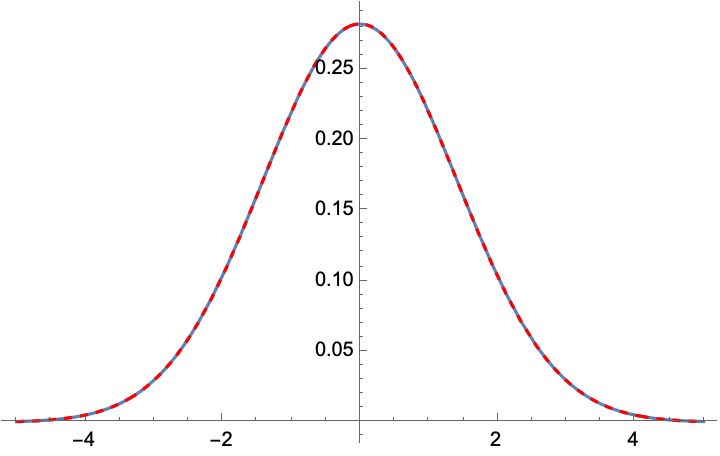Summary
The probability distribution (pdf) of a random walk in 1 dimension is represented by a Bessel function. On the other hand, the pdf of a Brownian motion in free space is represented by a Gaussian distribution. While it is possible to derive the diffusion equation from the master equation of a random walk by taking the limit of small jumps, is it possible to directly derive the Gaussian distribution as some asymptotic form of the Bessel function? In other words, can I derive the pdf of a Brownian motion directly from the pdf of a random walk, rather than from the equation of the random walk?
Consider a continuous time random walk on a neareast-neighbour 1d lattice, where each jump is of size $d$. The probability of being at site $n$, i.e. being at a distance $nd$ of the origin is described by: $$\dot{P}_{n}(t)=\frac{1}{2}\left(P_{n-1}(t)+P_{n+1}(t)\right)-P_{n}(t)$$
The solution is $P_n(t)=I_n(t)e^{-t}$, where $I_n(t)$ is the Bessel function.
When we extend the random walk on the real line, i.e $d\to 0$, the probability is described by the diffusion equation:
$$\frac{\partial p(x,t)}{\partial t}=D\frac{\partial^2p(x,t)}{\partial x^2}$$
The solution is $p(x,t)=\frac{1}{\sqrt{4\pi Dt}}e^{-x^2/4Dt}$.
Is it possible to derive the expression of $p(x,t)$ from our expression of $P_n(t)=I_n(t)e^{-t}$, instead of starting from the master equation? I.e. how does the Bessel function relate to the Gaussian distribution in the limit $d\to0$?
If the question is not clear, or you would like more details, please let me know and I will edit the question.

